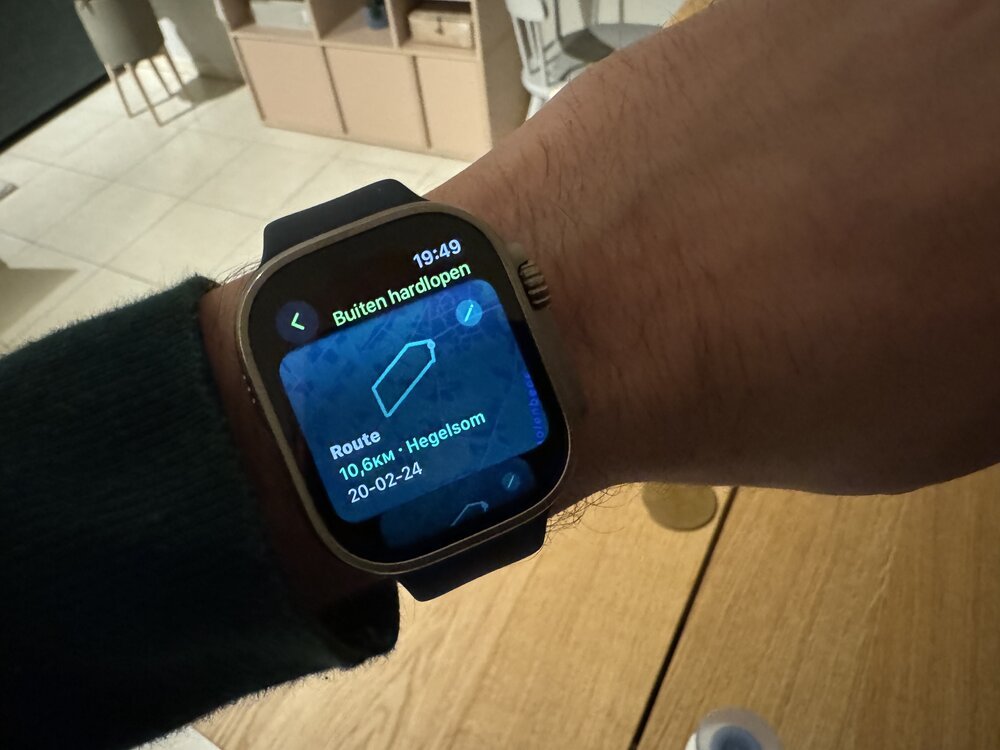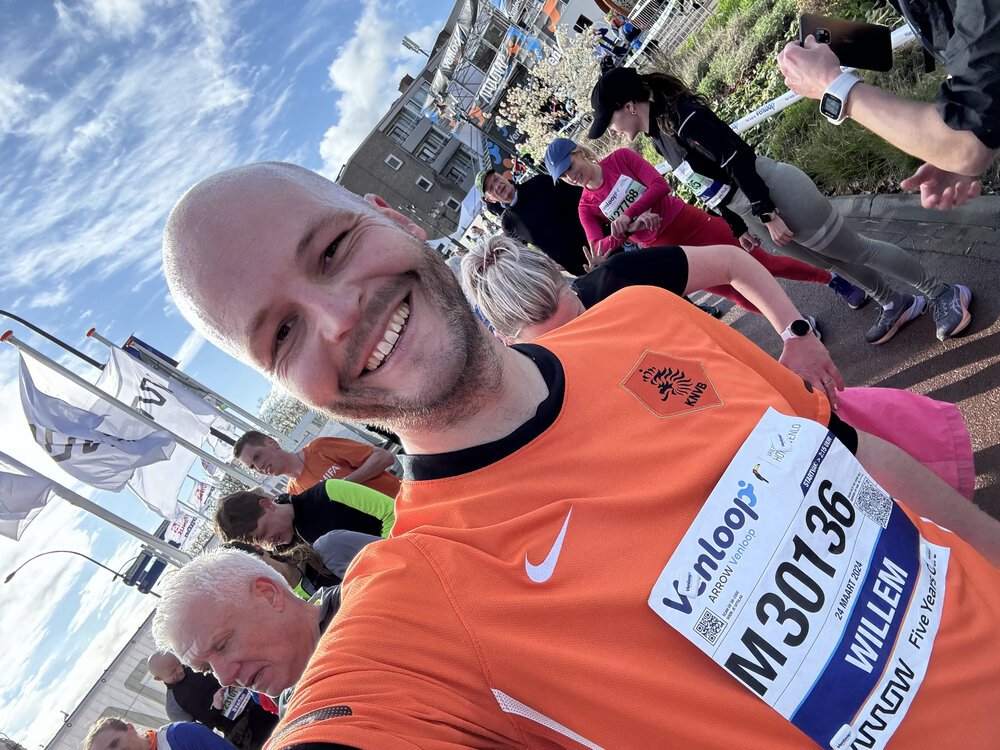Mar. 24, 2024
Half Marathon
On Training, Data and Feeling
Last Sunday, I participated in the Venloop, a half marathon event in Venlo. I completed the 21KM run in 2h05, a result I am satisfied with as this was my first ever 'official' event since I began running just three months ago. In this post, I'll share my experiences with training, balancing fitness data, and feeling fit.
Earlier this year I started my training for running. Ultimately, I hope to finish a full marathon later this year. To achieve this, I gradually increased the distance I ran during training sessions, starting with 5KM at various intensities to find a sustainable pace. Later, I extended the training distance to 10KM and finally to half a marathon distance (21KM).
During these three months, I meticulously tracked all measurable aspects using an Apple Watch Ultra 2 and WHOOP, augmented with additional Wahoo sensors like a heart rate monitor and power meter pedals on my bike. I combined cycling and running to boost my overall fitness while being careful not to overtrain. As a novice runner, my muscles and joints are not yet accustomed to the physical stress of running. To prevent injuries, I gradually increased my running distance.


The Apple Watch Ultra 2 recorded all my workouts using Apple's default workout app, which has significantly improved since I first used it. For running and cycling, it provides reliable GPS data and supports Bluetooth sensors, offering real-time feedback, both visual and audible. It helped me understand how my body reacts to differences in pace, distance, and terrain and even allows competing against past performances, a fun and motivating feature.
In addition to real-time data, I used WHOOP to monitor the broader effects on my body, like changes in my resting heart rate and HRV. WHOOP's strain metric showed the impact of training, highlighting the importance of managing workload to prevent overtraining. Recovery from intense sessions sometimes took a few days, and WHOOP's data reflected this.

On iOS, data can be aggregated in Apple HealthKit, a local, encrypted, offline database accessible only to third-party apps with your permission. Different apps can write data into HealthKit, making it a "single source of truth". The HealthFit app by Stéphane Lizeray does a phenomenal job making your workouts browsable and deriving valuable insights from the wealth of data. It's so good and well-designed that I wouldn't be surprised if Apple acquired it.

It analyses your workouts from various apps, including Apple Watch, Garmin, WHOOP, and Wahoo, and aggregates them into a single workout log. Using open and well-documented formulas, the app calculates training load (acute, chronic, and form). You can see the proverbial needles move as you increase your training load. I highly recommend this app if you want to leverage individual workout data into a broader analysis: 'trends are your friends'!


Running Half a Marathon
Preparation is crucial, but completing an official event is another challenge. Events are fixed, and you must be at peak performance on that day. Professional athletes refer to this as 'tapering': ensuring you're in top form for the event. The days leading up to the event should involve lighter training, with extra focus on sleep, diet, and hydration.
I participated in the Venloop, a local event in Venlo that draws large crowds. It's exhilarating when spectators cheer you on by name – it really boosts your morale. I loved the experience; it's like a "happy drug" that intensely energizes you.

Then, something unusual happened: Initially, I managed my pace using data from my watch, but around the halfway point, I felt confident enough to trust my instincts. I felt I could safely increase my pace, finding a better balance between speed and endurance. I began to 'feel' my run rather than just measuring it.
That feeling was phenomenal! The synergy between body and mind was enlightening, and now I crave more of that.

For the next period, I've decided to scale back my data-driven approach. I will continue to train, focusing more on my feelings. My aim is to increase my pace while maintaining the joy that running brings me. I run for personal pleasure, and I don't think I need an extensive dataset to achieve that. Are you running for yourself or for your data?
Conclusion
The first few months of my "running career" have brought me a long way. Now is the right moment to take the proverbial training wheels off. Let's find out where this will take me!


Download
If you enjoy reading offline, this article is available for download:
Translations
This article is available in the following languages:
RSS / Atom
Grab one of the feeds to stay up to date, the feeds contain the full posts:
